Explore Tsedang - Tibet Travel, Asia
Tsedang, commonly referred to as the cradle of Tibetan culture, is a hidden jewel buried in southeastern Tibet. As one of the oldest towns in Tibet, Tsedang offers travelers a unique blend of ancient history, rich culture, and breathtaking landscapes. Let’s travel to this wonderful land to experience the wonders of Tsedang with its top attractions, culinary delights, and cultural experiences.
Population: Approximately 52,000 in 2007.
Economy: Tsedang’s economy is primarily driven by tourism, agriculture, and local crafts. The town benefits from its rich cultural heritage and scenic beauty, attracting visitors and supporting local businesses.
Landmarks: Famous for the Yumbu Lakang Palace, Samye Monastery, and Tradruk Temple.
Tibet
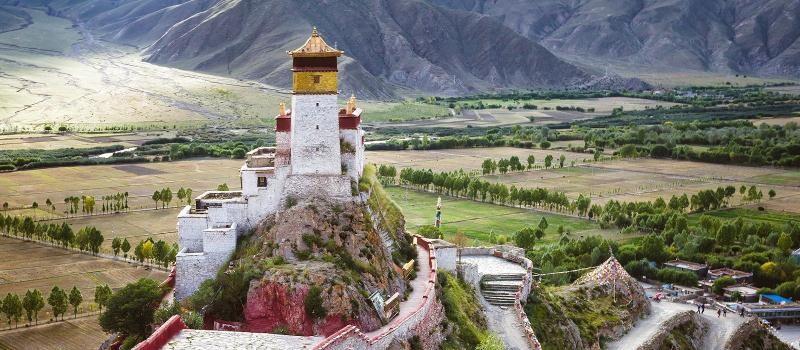
Overview of Tsedang
History & Cultural Influence
Tsedang’s historical tapestry is woven with tales of Tibetan royalty and ancient traditions. Known as the birthplace of Tibetan civilization, it boasts several historical landmarks that reflect its storied past. For example, the Yumbu Lakang Palace, believed to be the oldest palace in Tibet, is constructed on a hilltop, offering panoramic views and insights into the early Tibetan dynasties. Tsedang is deeply influenced by Tibetan Buddhism, which permeates every aspect of local life. The region’s cultural heritage is evident in its traditional festivals, monastic rituals, and the vibrant local art scene. The blend of ancient Tibetan customs and Buddhist practices creates a unique cultural landscape that continues to fascinate visitors.
Interaction with the Locals
Tsedang, in Tibet's Shannan Prefecture, is a small town of around 52,000 people living inside. The local population primarily consists of Tibetan ethnic groups, reflecting the town's rich cultural heritage. The community is known for its strong ties to Tibetan Buddhism, traditional practices, and a lifestyle deeply rooted in the region’s historical and spiritual legacy.
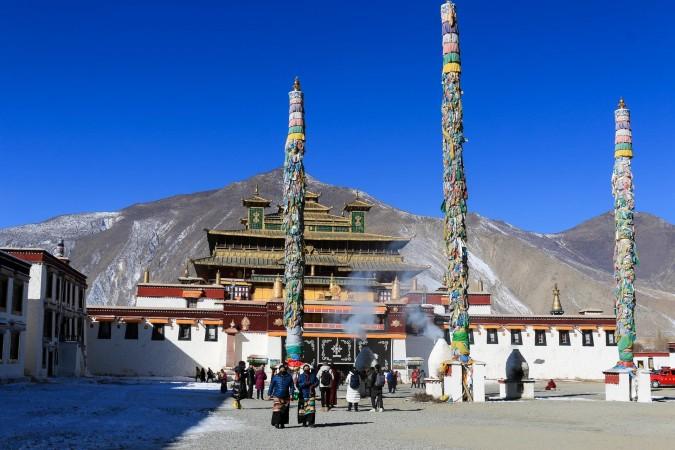
Samye Monastery - © Tibet Tourism
Top Attractions in Tsedang
Tsedang is surrounded by stunning natural beauty and historical sites. The Tibetan plateau’s high-altitude landscapes provide a dramatic backdrop to the town, with sprawling valleys and snow-capped mountains. Exploring these areas offers opportunities for trekking and photography, allowing you to capture the essence of Tibet’s majestic scenery.
Yumbu Lakang Palace
Yumbu Lakang Palace, perched on a rocky cliff, is often regarded as Tibet's oldest palace. Built in the 7th century, it was the residence of the early Tibetan kings. The palace’s unique architectural style, combined with its elevated location, provides stunning panoramic views of the surrounding valleys and mountains. A visit to Yumbu Lakang offers insights into the ancient Tibetan royal lineage and the evolution of Tibetan architecture.
Samye Monastery
As Tibet’s first Buddhist monastery, Samye Monastery holds a special place in Tibetan Buddhism. This monastery, founded in the eighth century by King Trisong Detsen, has a remarkable mandala pattern that represents the Buddhist universe. The monastery’s intricate murals, ancient scriptures, and serene atmosphere make it a key site for spiritual reflection and exploration of Tibetan Buddhist practices. Its historical and religious significance draws both pilgrims and visitors.
Tradruk Temple
Tradruk Temple is renowned for its exquisite murals and religious artifacts, reflecting the depth of Tibetan artistic tradition. It was founded in the seventh century and is one of Tibet's oldest temples. The temple’s architecture, featuring intricate wood carvings and vibrant frescoes, offers a window into Tibetan religious art and history. A visit to Tradruk Temple provides a deeper understanding of Tibetan spirituality and cultural heritage.
Mindroling Monastery
The Mindroling Monastery, situated a short drive from Tsedang, is a key center of the Nyingma school of Tibetan Buddhism. The monastery is renowned for its impressive statues, vibrant murals, and beautiful surroundings. It offers a peaceful retreat and a deeper understanding of Tibetan spiritual practices.
Yarlung Tsangpo River
The Yarlung Tsangpo River, one of Tibet’s major rivers, flows gracefully through the region. Its scenic banks and crystal-clear waters offer opportunities for tranquil walks and nature photography. The river is also integral to Tibetan culture and spirituality, adding a layer of significance to its natural beauty.
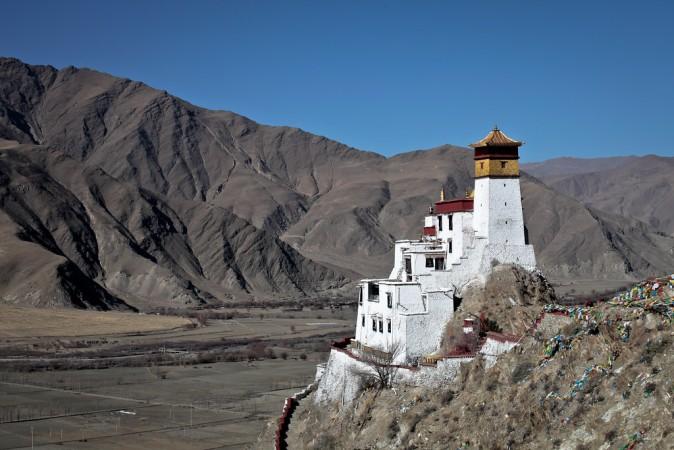
Yumbu Lakang Palace - © Erik Törner
Must-Try Dishes in Tsedang
Tsedang’s cuisine is a delightful fusion of traditional Tibetan flavors, offering a range of dishes that are essential to the local dining experience. The following are some must-try meals that embody the spirit of Tibetan cuisine.
- Yak Tsampa: A traditional Tibetan dish made from roasted barley flour and yak meat, often enjoyed with butter tea. It's a hearty, nutritious option that reflects the local diet.
- Yak Momo: Tibetan dumplings filled with spiced yak meat, these are a popular snack or meal, renowned for their flavorful fillings and tender wrappers.
- Thukpa: A comforting noodle soup made with chewy noodles in a savory broth, often enhanced with vegetables and tender pieces of meat. It's a Tibetan culinary classic that's ideal for a warm supper.
- Butter Tea (Po Cha): Made from tea leaves, yak butter, and salt, this traditional beverage is integral to Tibetan culture. It provides warmth and energy, especially useful in the high-altitude environment of Tibet.
- Chang: A traditional barley wine enjoyed during social gatherings and festivals. It has a slightly sour taste and is served in small bowls, offering a unique glimpse into local drinking customs.
- Shapta: Stir-fried yak meat or beef mixed with vegetables and spices, served with steamed bread or rice. This meal is popular for its rich tastes and delicate beef.
- Bing Bread: A type of Tibetan bread that is typically round and flat, often enjoyed with tea or as an accompaniment to various dishes. It’s slightly chewy and a staple in Tibetan meals.
- Chura (Tibetan Cheese): Made from yak milk, this traditional cheese comes in various forms, including dried or fresh. It’s often used in dishes or enjoyed on its own as a savory snack.
- Thenthuk: A hearty Tibetan stew prepared with hand-pulled noodles, pork, and veggies. It’s a robust, flavorful dish that provides a comforting and filling meal.
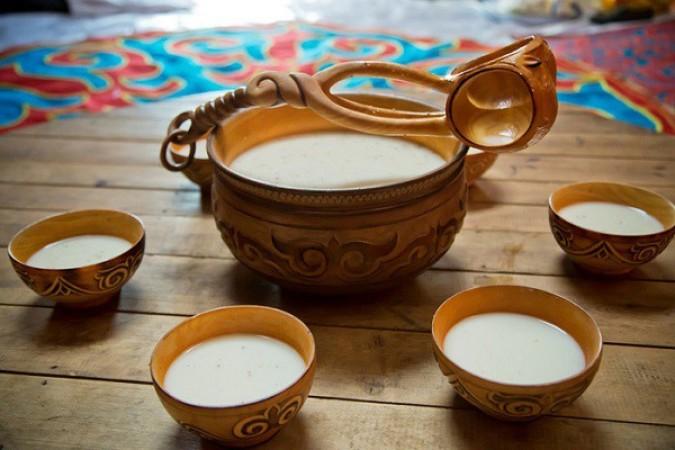
Butter Tea (Po Cha) - © VietnamNet
Festivals & Local Celebrations
Saga Dawa Festival
The Saga Dawa Festival is one of the most significant Tibetan Buddhist celebrations, marking the birth, enlightenment, and death of Buddha. Held in the fourth month of the Tibetan lunar calendar, it features various religious ceremonies, including prostrations and offerings at monasteries. The festival is a time for reflection, devotion, and communal festivities.
Tibetan New Year (Losar Holiday)
Losar, or Tibetan New Year, is a major celebration that typically occurs in February or March. It is a time of joyous festivities, including traditional dances, music performances, and elaborate feasts. Losar is marked by rituals to drive away evil spirits and bring in good fortune for the year ahead.
Butter Lamp Festival
The Butter Lamp Festival is observed at monasteries around Tsedang. It involves the lighting of thousands of butter lamps to symbolize the dispelling of darkness and the illumination of wisdom. This festival provides a beautiful and spiritual experience, showcasing Tibetan Buddhism’s deep reverence for light and enlightenment.
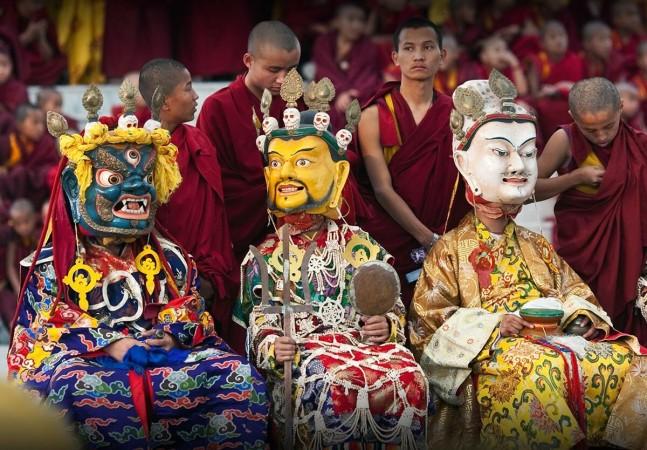
Tibetan New Year (Losar Holiday) - © National Today
What to Do in Tsedang
- Trekking in Tsedang: Explore the breathtaking landscapes surrounding Tsedang with treks around landmarks like Yumbu Lakang Palace and the areas near Samye Monastery. Enjoy panoramic views of the Tibetan plateau and immerse yourself in the natural beauty of high-altitude terrain.
- Monastery Tours in Tsedang: Visit Samye Monastery and Tradruk Temple to experience Tibetan Buddhism up close. These monasteries offer insights into Buddhist rituals, ancient scriptures, and stunning religious art. Engaging with local monks and witnessing traditional ceremonies provide a deeper understanding of Tibetan spirituality.
- Experience Tsedang's Festivals: Time your visit to coincide with local festivals such as the Saga Dawa Festival or Losar (Tibetan New Year). These vibrant celebrations feature traditional music, dance, and rituals, offering a lively and immersive cultural experience.
- Experience Spiritual Practices: Take part in meditation sessions or traditional rituals at local monasteries. This is an opportunity to connect with Tibetan spiritual practices and experience a tranquil side of Tibetan life.
Shopping in Tsedang
- Tsedang Market: The bustling Tsedang Market is the heart of local commerce. Here, you’ll find a wide range of traditional Tibetan products, including handcrafted jewelry, Thangka paintings, textiles, and local snacks. The lively market atmosphere makes it a great place to experience local life and pick up unique souvenirs.
- Local Craft Shops: Explore local craft shops that specialize in Tibetan art and handmade items. Look for shops offering intricate Thangka paintings, beautifully woven carpets, and traditional Tibetan jewelry. These shops provide authentic Tibetan crafts and a chance to support local artisans.
- Traditional Tibetan Souvenir Stores: Visit stores dedicated to Tibetan souvenirs such as Tibetan incense, hand-woven rugs, and Tibetan musical instruments. These items are perfect for capturing the essence of your trip and making memorable keepsakes.
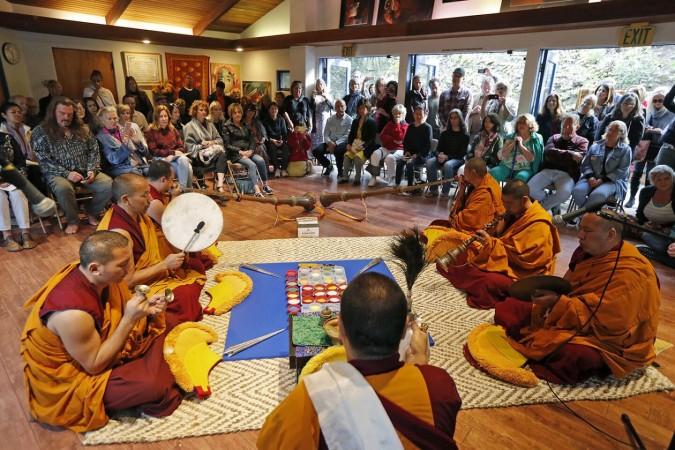
Experience Spiritual Practices with Tibetan monks - © Los Angeles Times
Weather in Tsedang: Best Time to Visit
Tsedang's weather is characterized by its high-altitude climate, which can be quite variable, therefore with better understanding of the local weather conditions will help you plan your visit effectively.
Spring in Tsedang
Spring in Tsedang is characterized by mild temperatures and blooming landscapes. With daytime temperatures ranging from 10°C to 20°C (50°F to 68°F), this season is ideal for outdoor activities such as trekking and exploring historical sites. The pleasant weather and clear skies attract many tourists who wish to enjoy the vibrant natural scenery and less crowded attractions.
Summer in Tsedang
Summer provides warmer temperatures ranging from 15°C to 25°C (59°F to 77°F) and is the busiest tourist season in Tsedang. The sunny, dry weather is perfect for sightseeing and visiting local festivals. However, occasional afternoon thunderstorms can occur, so travelers should be prepared for sudden changes in weather. This is an excellent time for outdoor adventures and cultural experiences, with many visitors flocking to the region.
Autumn in Tsedang
Autumn offers crisp, clear air and cooler temperatures between 5°C and 15°C (41°F to 59°F). The fall colors create a picturesque backdrop, making it a fantastic time for photography and leisurely exploration. This season is less crowded than summer, providing a more relaxed experience while enjoying Tsedang’s attractions. The clear skies and beautiful scenery make autumn a favorite for travelers seeking tranquility and natural beauty.
Winter in Tsedang
Winter in Tsedang is marked by cold temperatures, ranging from -10°C to 5°C (14°F to 41°F), with snow often blanketing the landscape. While the cold can be intense, winter offers a serene and less tourist-heavy experience. The snowy landscapes create a magical setting for those who appreciate winter scenery and solitude. Travelers should come prepared for the cold but can enjoy a peaceful and picturesque visit during this off-peak season.

Travel to Tsedang to witness its beautiful landscape - © PhatGiao.org
Essential Travel Information
Getting Around Tsedang
- Local Buses: Local buses are an affordable way to travel within Tsedang. They connect major landmarks and neighborhoods, though they might be less frequent, especially in rural areas.
- Taxis: Taxis are readily available and offer a convenient mode of transport for tourists. It’s advisable to use registered taxis and confirm the fare before starting your journey.
- Motorbikes and Bicycles: Motorbikes and bicycles can be rented for a more adventurous way to explore. This option is suitable for those comfortable with driving in high-altitude environments and wanting to experience the landscape up close.
ATM & Banking Services
In Tsedang, accessing banking services is straightforward with several convenient options available. ATMs are widely distributed throughout the town, particularly in central areas and near major hotels, and generally accept international credit and debit cards. Local banks provide various services, including currency exchange and cash withdrawals, with exchange services also available at some hotels. While credit cards are accepted in many hotels, restaurants, and shops, it's advisable to carry some cash as smaller vendors and remote areas may prefer it.
Where to Stay in Tsedang
- Luxury Hotels: For a luxurious stay, consider five-star hotels like the Shangri-La Hotel Tsedang, which offer top-notch amenities, stunning views, and exceptional service. These hotels offer a comfortable and more refined experience.
- Mid-Range Hotels: Mid-range hotels such as the Yarlung Zangbo Hotel offer a balance of comfort and affordability. They provide clean, comfortable rooms and convenient access to local attractions.
- Guesthouses and Hostels: Guesthouses and hostels are ideal for budget-conscious travelers. Places like Tsedang Youth Hostel provide a friendly atmosphere and a chance to meet fellow travelers while keeping costs down.
- Traditional Tibetan Inns: Staying at traditional Tibetan inns provides an opportunity to experience local hospitality. These accommodations offer a unique cultural experience, with traditional decor and authentic Tibetan hospitality.
- Homestays: For a more immersive experience, consider homestays with local families. This option provides insight into daily Tibetan life and allows you to enjoy home-cooked meals and personal interactions with locals.
Articles for you

Explore Yala National Park - Sri Lanka Travel, Asia
Tucked away in Sri Lanka’s southeastern corner, Yala National Park is where wild nature meets deep tradition. Known worldwide for its leopard population, the park is also home to elephants, sloth bears, crocodiles, and hundreds of bird species. Beyond wildlife, Yala opens doors to a cultural landscape dotted with ancient temples, Buddhist ruins, and coastal villages. For travelers seeking more than just a safari, Yala offers a chance to explore eco-tourism, local communities, and sacred heritage sites.
Population: The Yala National Park area doesn’t have a human population.
Economy: The economy around Yala National Park thrives on a blend of eco-tourism, agriculture, and local services. Safari tours, eco-lodges, and cultural experiences drive steady income for nearby towns like Tissamaharama and Kataragama, supporting thousands of families.
Landmarks: Famous for Block I of Yala and wildlife encounters, including elephants, sloth bears, crocodiles, and exotic bird species.

Explore Galle - Sri Lanka Travel, Asia
Nestled on Sri Lanka’s southern coastline, Galle is a vibrant city where history meets the sea. Its cobbled streets, colonial architecture, and serene beaches make it a must-visit destination for travelers seeking a blend of culture, adventure, and relaxation. A UNESCO World Heritage site, Galle captivates visitors with its Dutch Fort, bustling markets, and friendly locals. Whether you’re exploring the ramparts at sunset or savoring fresh seafood by the shore, Galle promises an unforgettable journey into Sri Lanka’s heritage.
Population: Approximately 113,000 in 2023.
Economy: Galle’s economy thrives on tourism, trade, and fisheries. The city’s historic fort, colonial architecture, and coastal charm draw thousands of international visitors each year, making tourism its main economic driver. Fishing remains vital for local livelihoods, supplying fresh seafood across the region.
Landmarks: Famous for the Galle Fort, Dutch Reformed Church & Maritime Museum, and Unawatuna Beach.

Explore Bentota - Sri Lanka Travel, Asia
Nestled along Sri Lanka’s southwestern coast, Bentota is a tropical paradise that blends golden beaches, vibrant culture, and thrilling adventures. Famous for its calm waters, luxury resorts, and scenic river estuary, Bentota has become a top destination for travelers seeking both relaxation and authentic experiences. From serene beach walks at sunrise to adrenaline-pumping water sports, this coastal town offers a perfect balance of leisure and exploration. With its proximity to Colombo and Galle, Bentota is easy to reach, making it an ideal stop for both short escapes and extended holidays.
Population: Approximately 37,000 in 2023.
Economy: Bentota’s economy thrives mainly on tourism, which drives local businesses such as hotels, restaurants, and wellness retreats. The town also benefits from fishing, coconut cultivation, and handicrafts like wood carving and batik textiles. Many residents rely on the growing demand for water sports and Ayurvedic treatments, making tourism the backbone of both income and employment in the area.
Landmarks: Famous for Bentota Beach, Bentota River Safari, and Kande Vihara Temple.

Explore Mirissa - Sri Lanka Travel, Asia
Mirissa is a charming coastal town on Sri Lanka’s southern shoreline. Known for its golden beaches, turquoise waters, and vibrant marine life, it has become a must-visit stop for travelers exploring the island. Many come for whale watching, surfing, and sunset views at Coconut Tree Hill, but Mirissa offers much more than postcard beauty. The fishing boats you see anchored by the bay carry generations of stories. Local traditions, delicious cuisine, and a laid-back rhythm of life shape every visitor’s experience.
Population: Approximately 4,700 in 2023.
Economy: Mirissa’s economy is largely shaped by its coastal location. Fishing has long been the backbone of local livelihoods, with generations relying on the Indian Ocean for income. In recent decades, tourism has become the main driver of growth, thanks to whale watching, surfing, and beachside hospitality.
Landmarks: Famous for Mirissa Beach, Coconut Tree Hill, and Parrot Rock Bridge.

Explore Nuwara Eliya - Sri Lanka Travel, Asia
Tucked away in the Central Highlands of Sri Lanka, Nuwara Eliya is often called “Little England”. With its rolling tea plantations, cool misty mornings, and colonial charm, this mountain town feels like a step into another world. Travelers come here to breathe fresh air, walk through flower gardens, sip the finest Ceylon Tea, and enjoy a pace of life far from the island’s busy cities. Whether you’re drawn by scenic landscapes, heritage architecture, or the warmth of its people, Nuwara Eliya is a destination that blends nature, culture, and history in perfect harmony.
Population: Approximately 781,000 in 2023.
Economy: Nuwara Eliya’s economy thrives mainly on tea production, as it sits in the heart of Sri Lanka’s central highlands, famous worldwide for Ceylon Tea. The city also benefits from a growing tourism industry, attracting visitors with its colonial charm, cool climate, and scenic landscapes.
Landmarks: Famous for Gregory Lake, Hakgala Botanical Garden, and Victoria Park.

Explore Sukau - Malaysia Travel, Asia
Nestled on the banks of the Kinabatangan River in Sabah, Malaysian Borneo, Sukau is a destination where wildlife, culture, and conservation come together. Known as one of Asia’s top spots for river safaris and eco-tourism, this quiet village offers a front-row seat to encounters with Bornean orangutans, pygmy elephants, proboscis monkeys, and exotic birdlife.
Population: Approximately 1,400 in 2019.
Economy: Sukau’s economy is shaped by its riverine location and natural resources. Traditionally, the Orang Sungai community relied on fishing, small-scale farming, and forest gathering for their livelihood. Today, the village has shifted toward eco-tourism, with river cruises, jungle trekking, and homestays providing income.
Landmarks: Famous for the Kinabatangan River cruises, Gomantong Caves, and Ox-bow lakes and wetlands.
